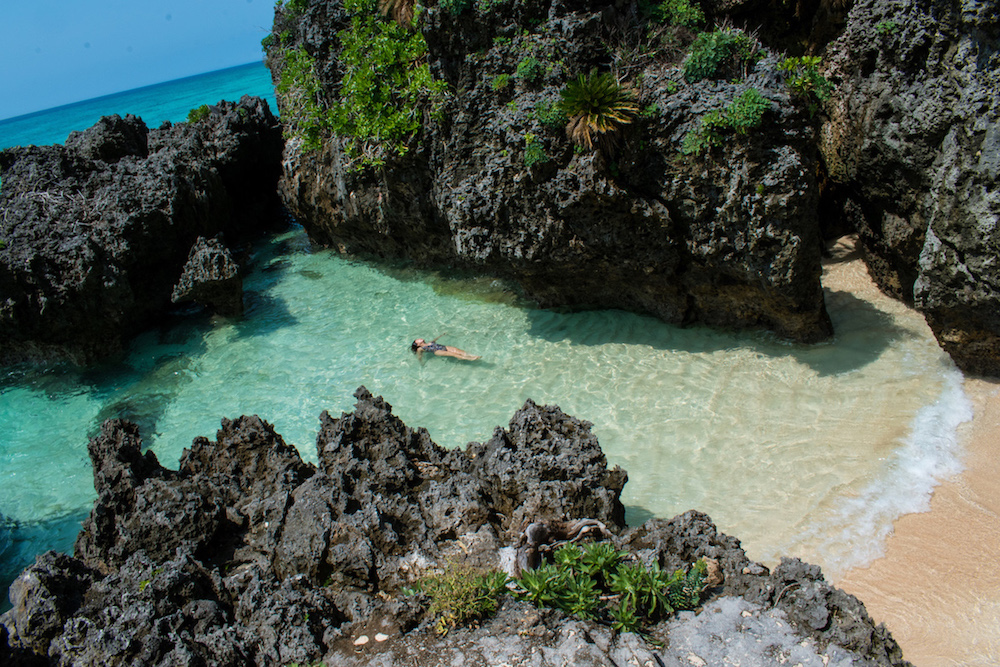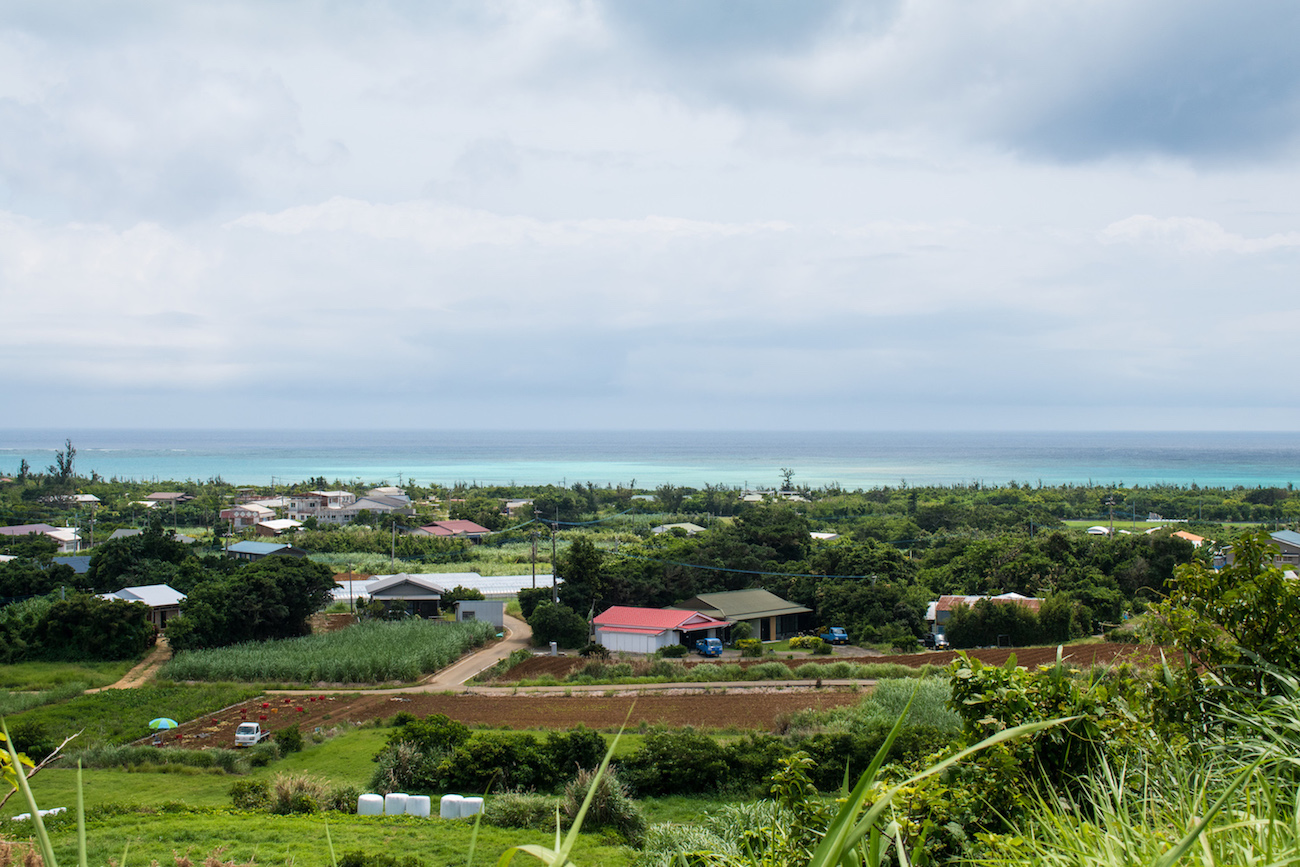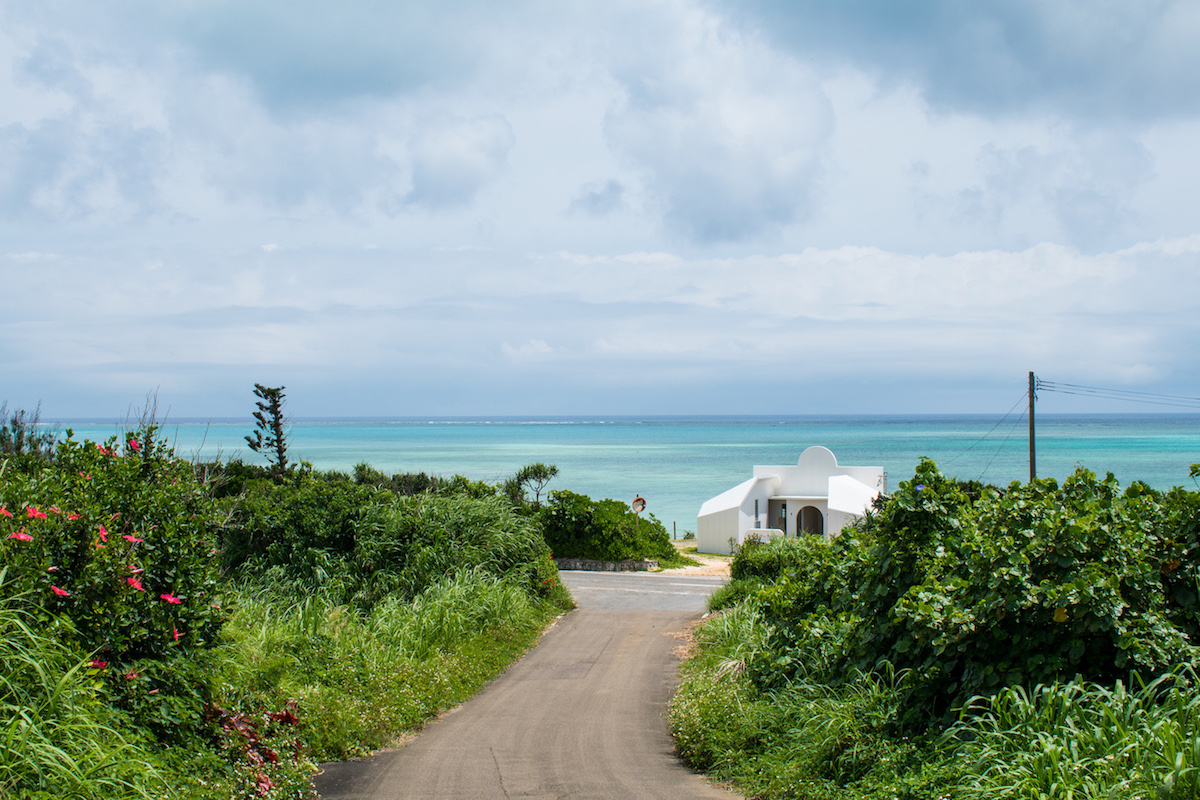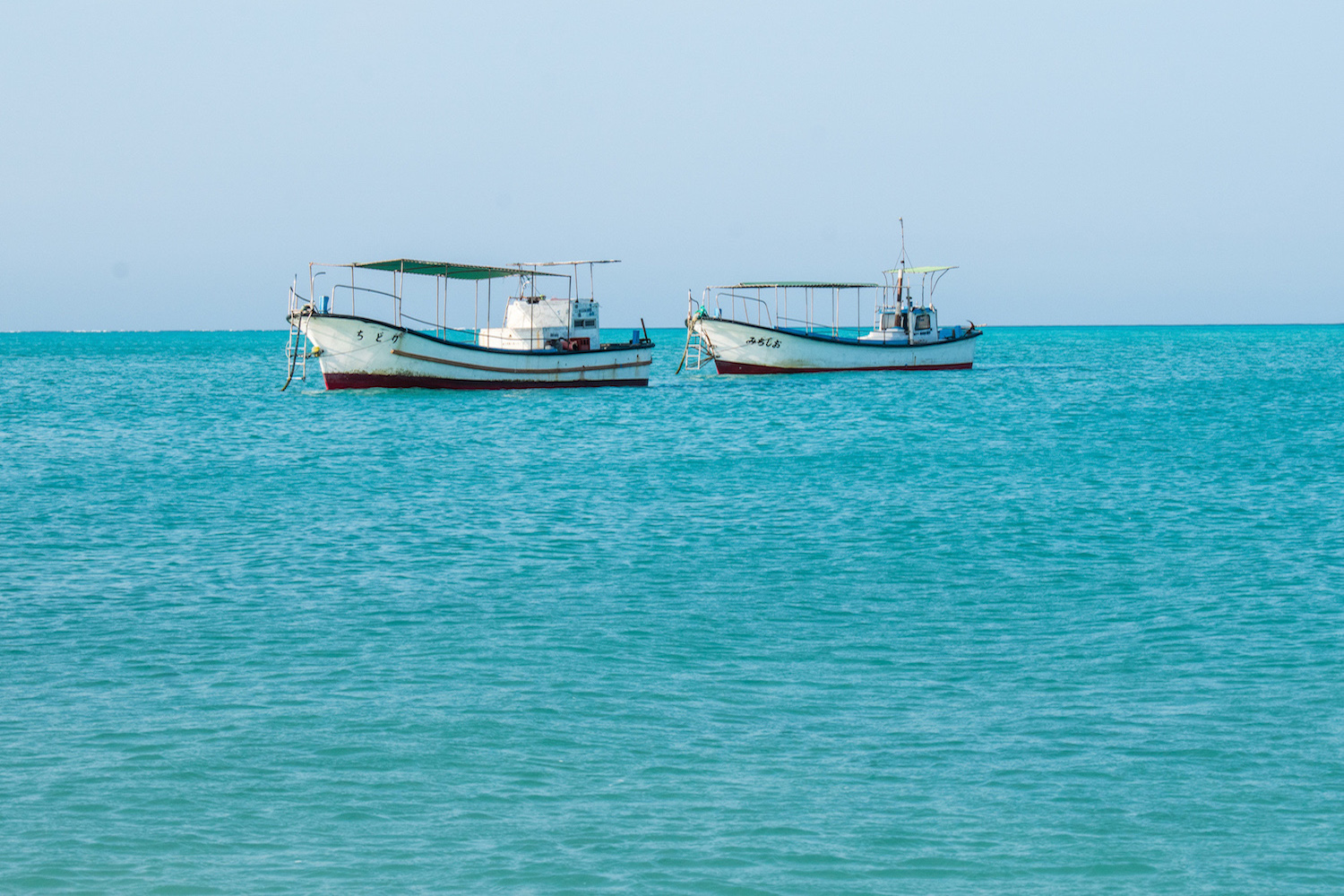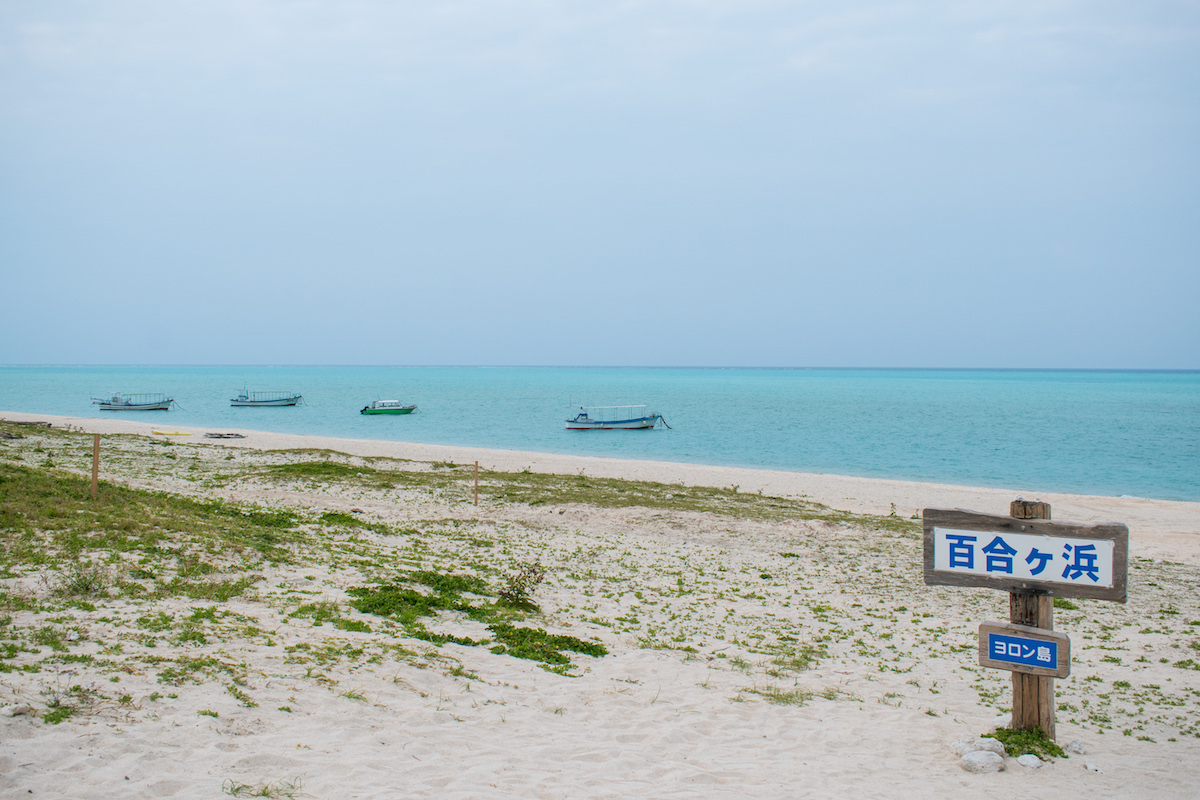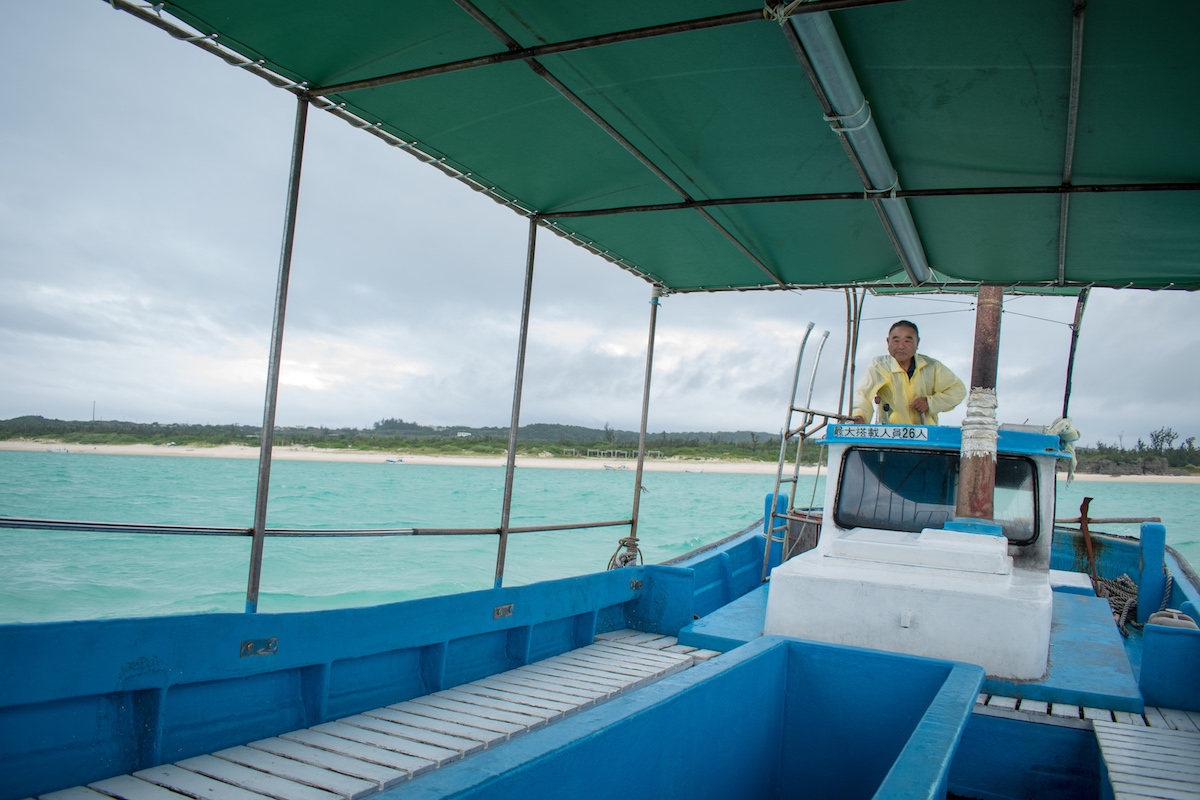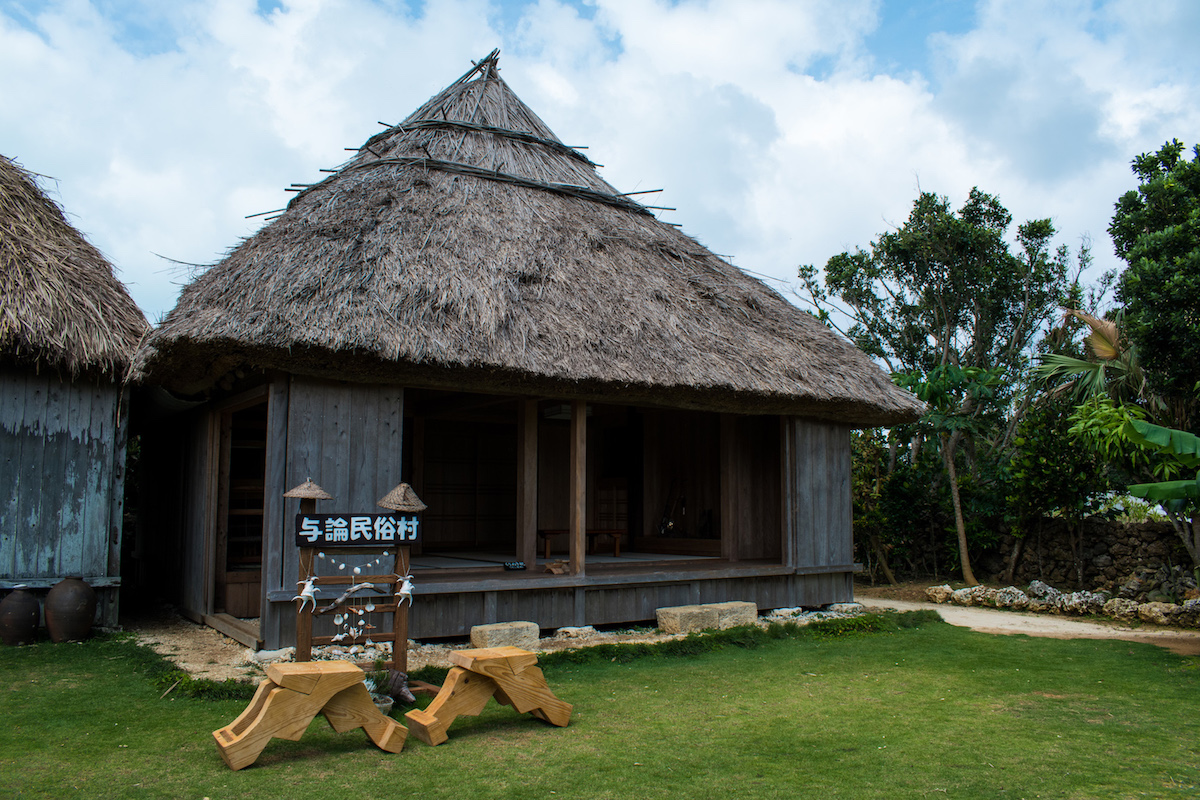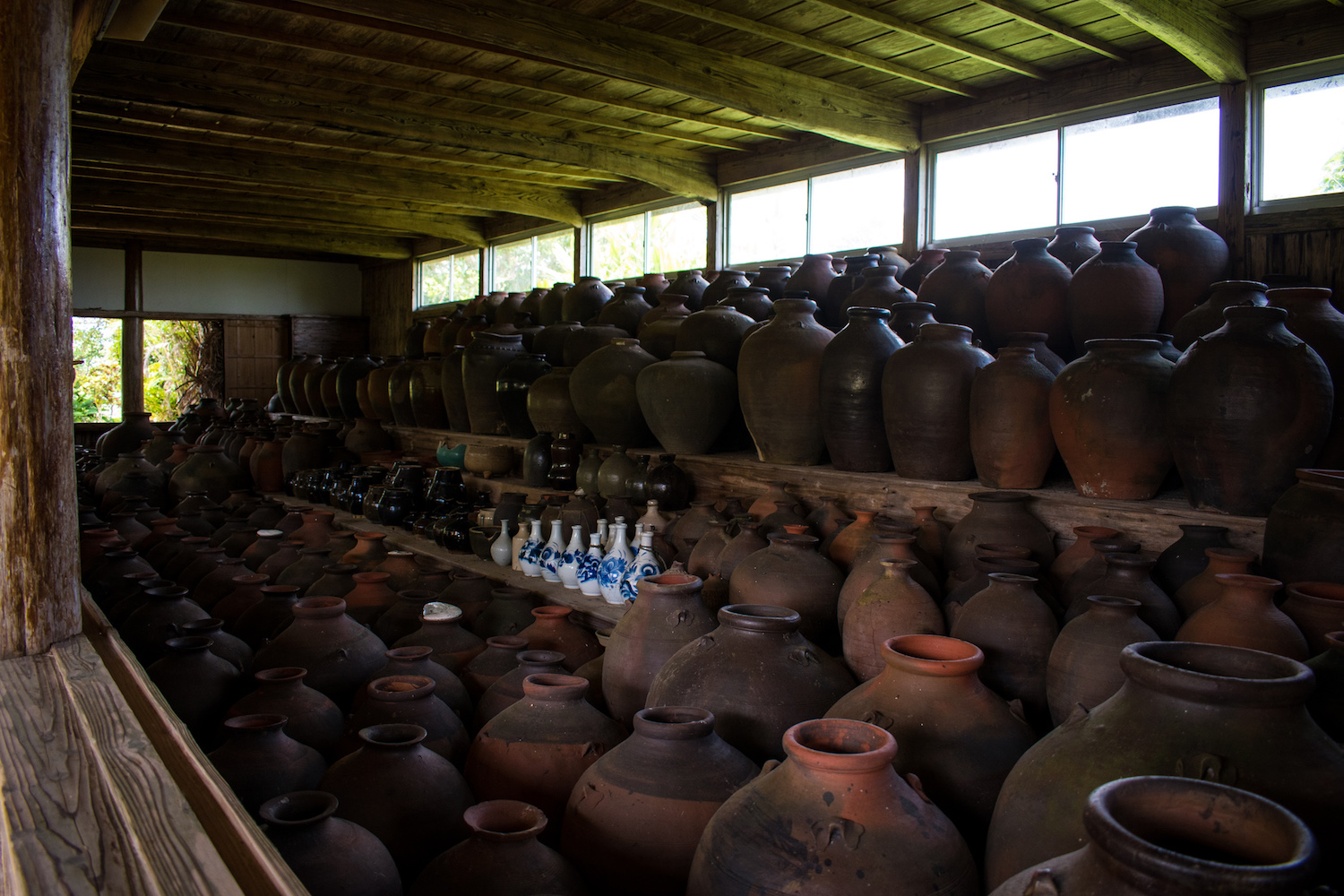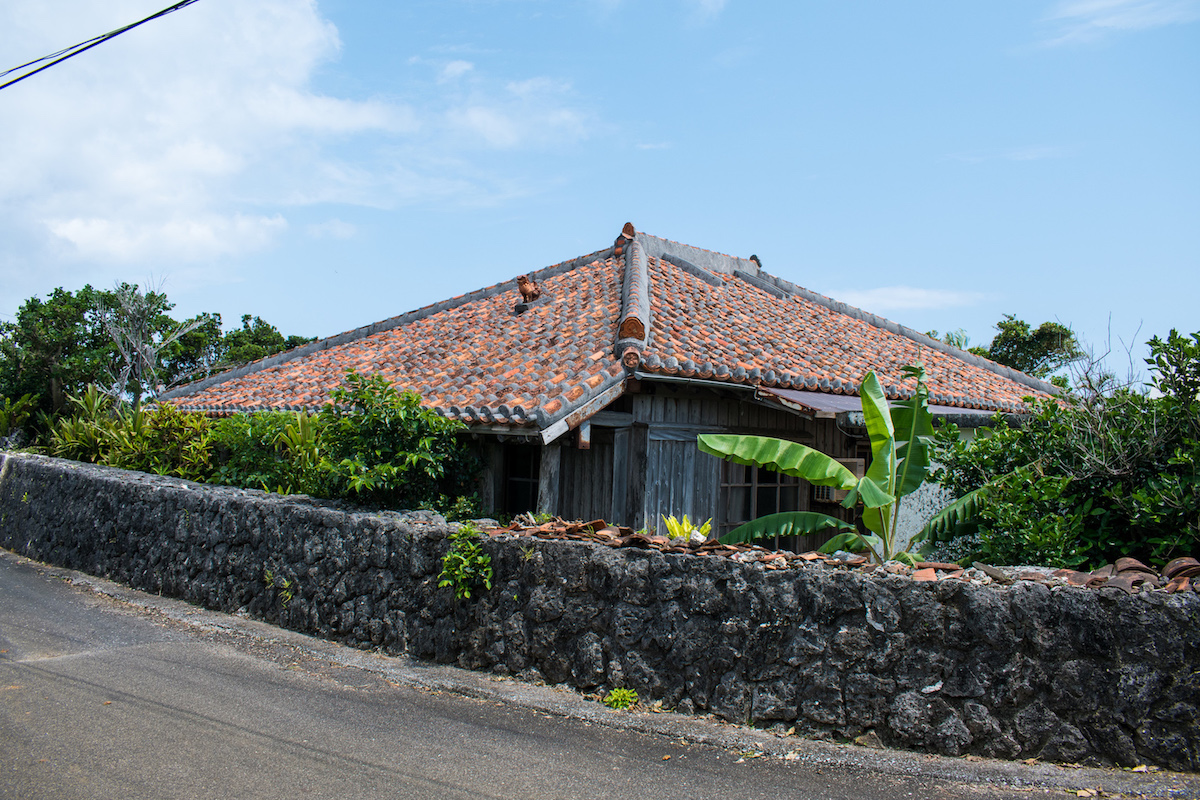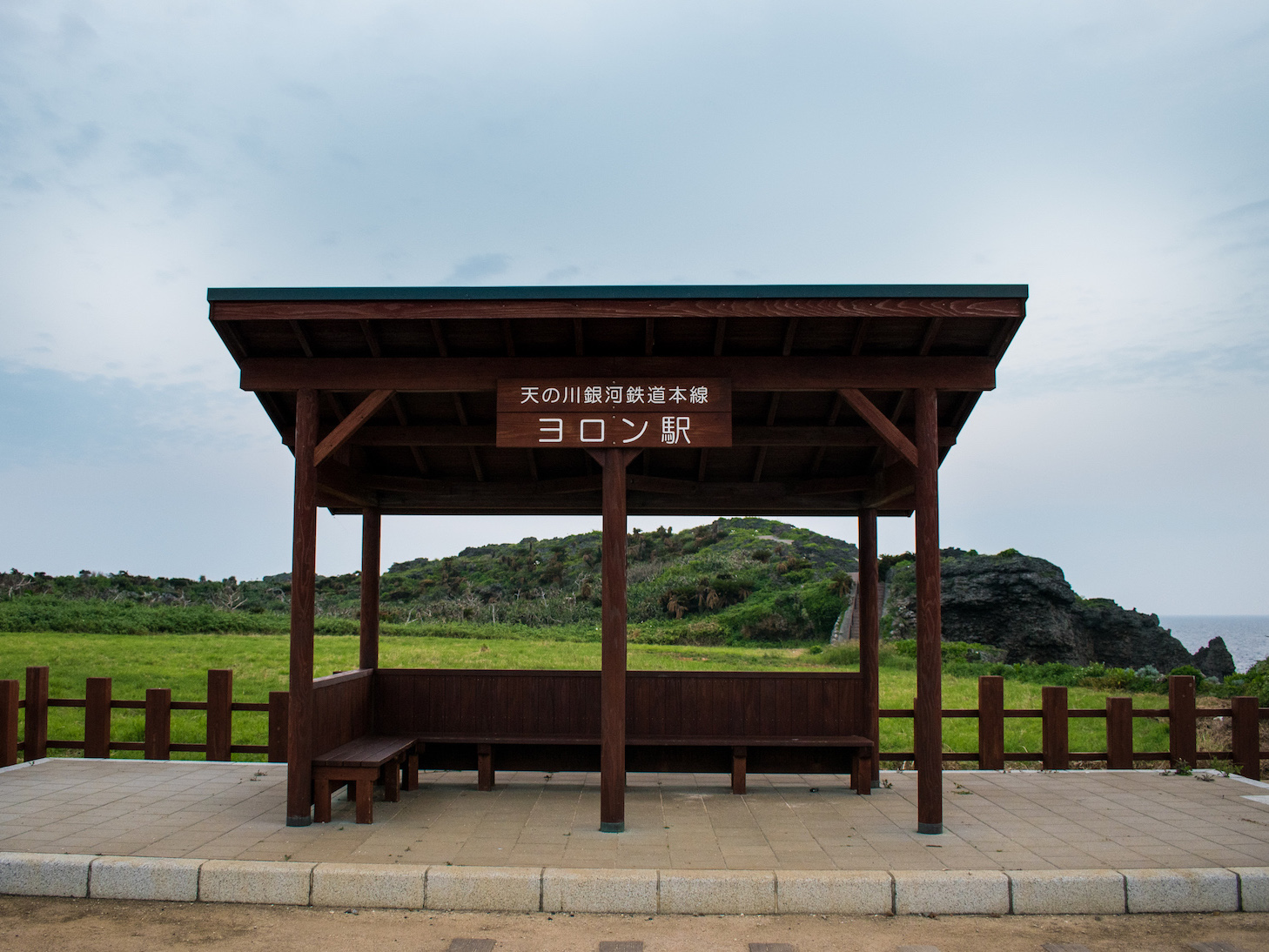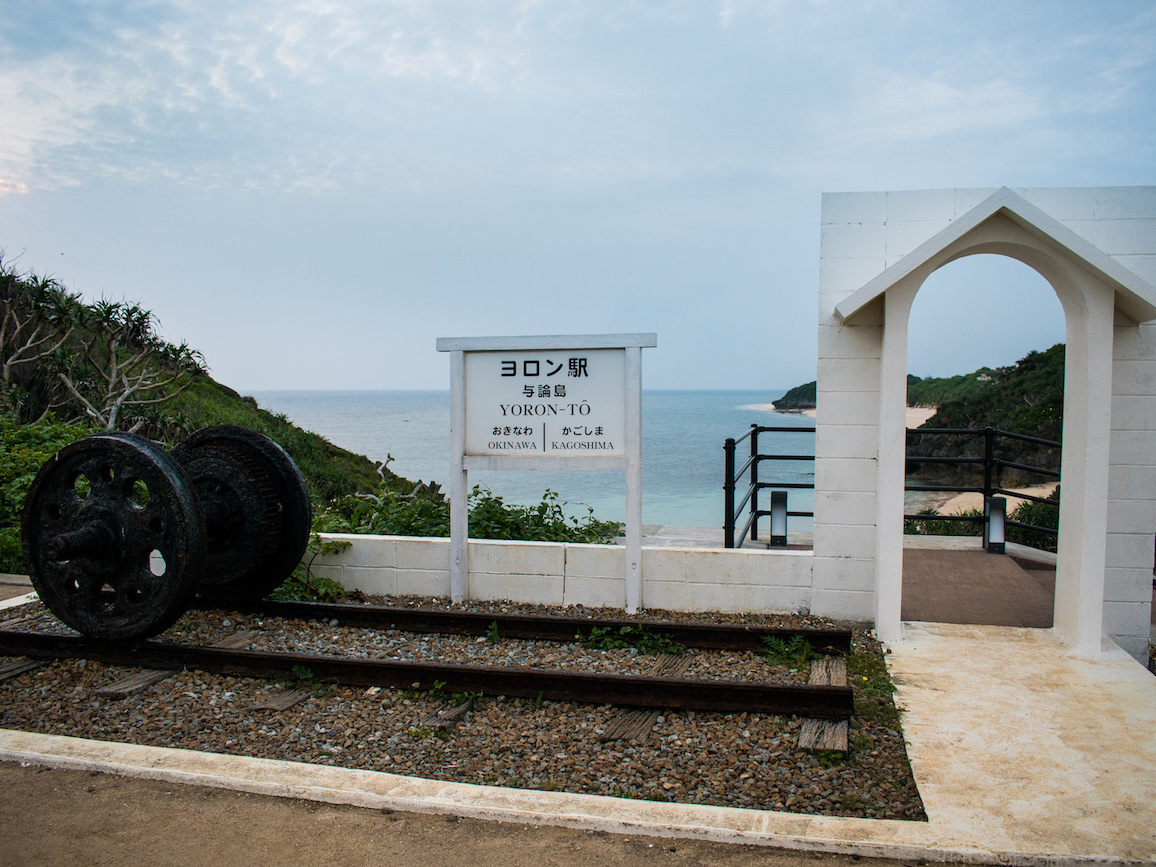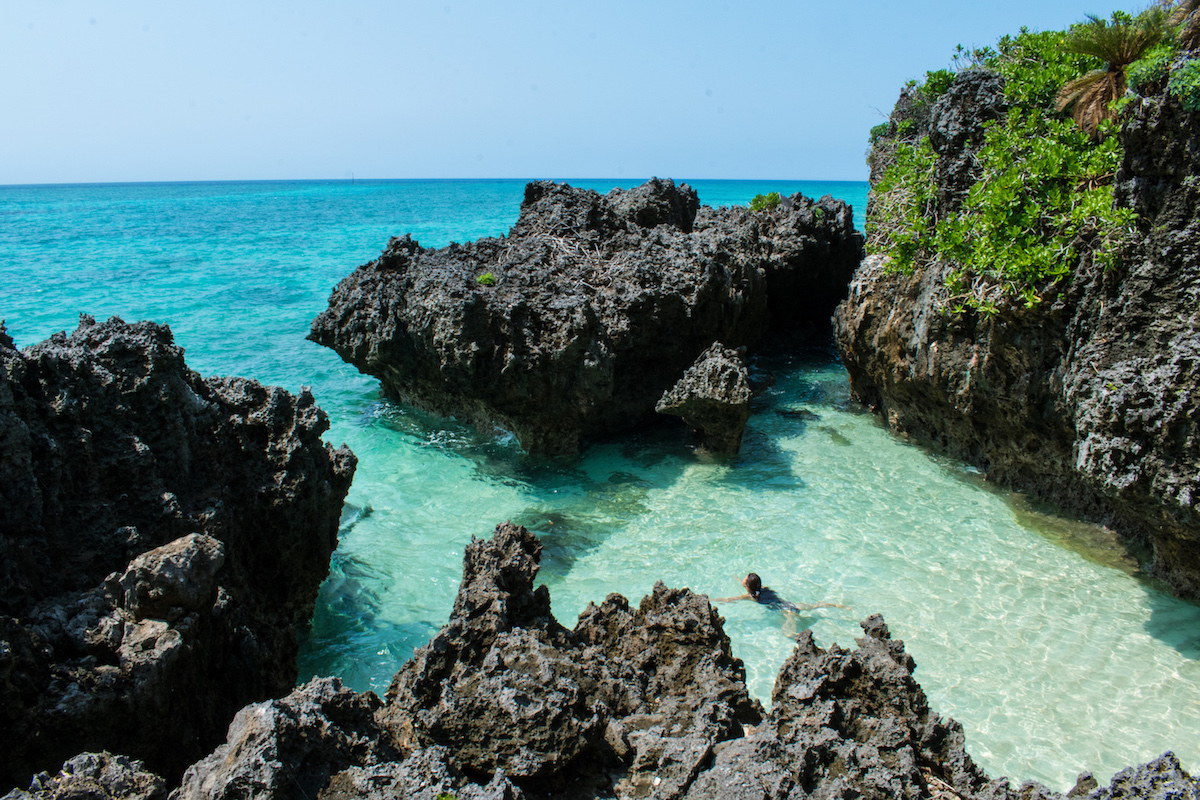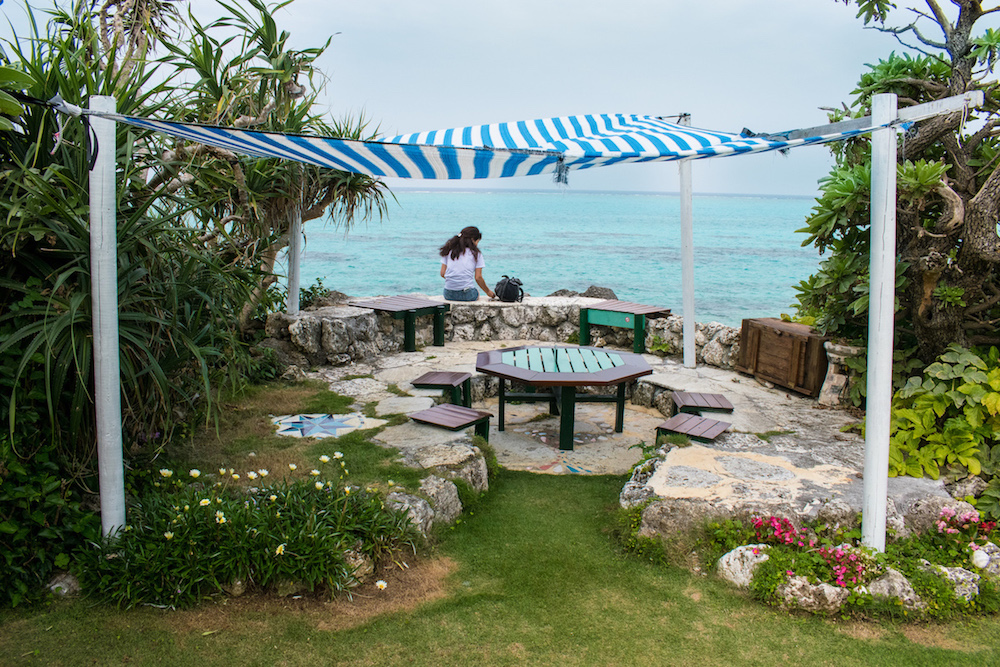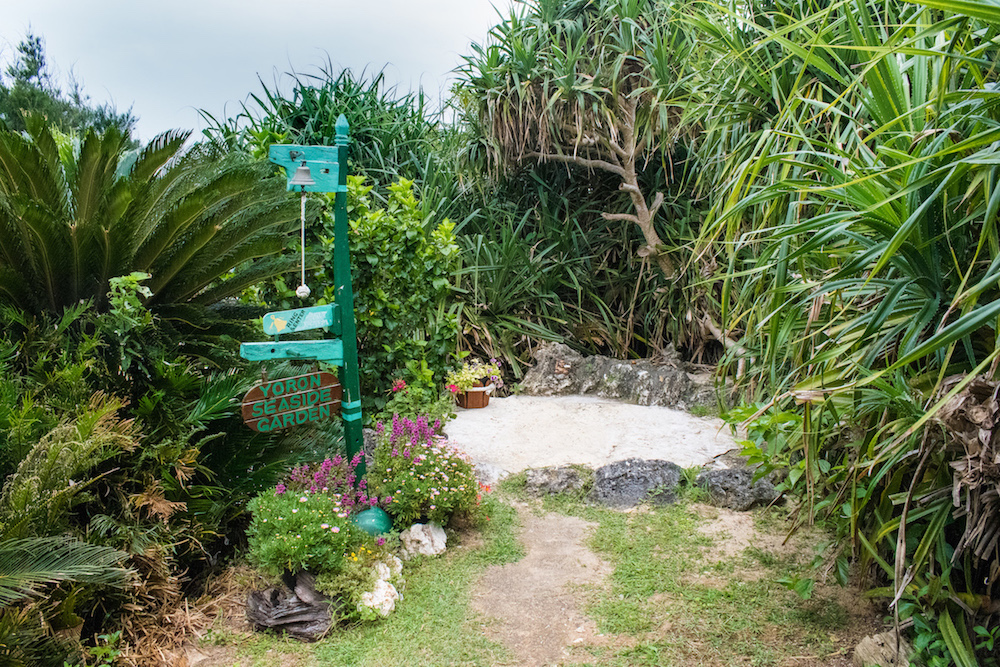日本列島は、北東部はオホーツク海から、南部はフィリピン海にかけおよそ3,000キロメートル超に広がる6,852個もの島から成り、ユーラシア大陸の北東沖にまで広がる。日本列島には、位置も様々なら景観や文化も大きく異なる島々が集まっているので、どの島も見どころ満載となっている。
日本といえば、東京、大阪といったメガシティや、京都市、高山市、金沢市を始めとする各地に多数存在する歴史遺産で有名な国だが、主要観光地から離れてみると、多様性に富んだ日本の新たな一面を楽しむことができる。そこで、ディープな日本旅行を満喫したいという人に最適な地が、沖縄本島と鹿児島県の間に浮かぶ島、与論島だ。
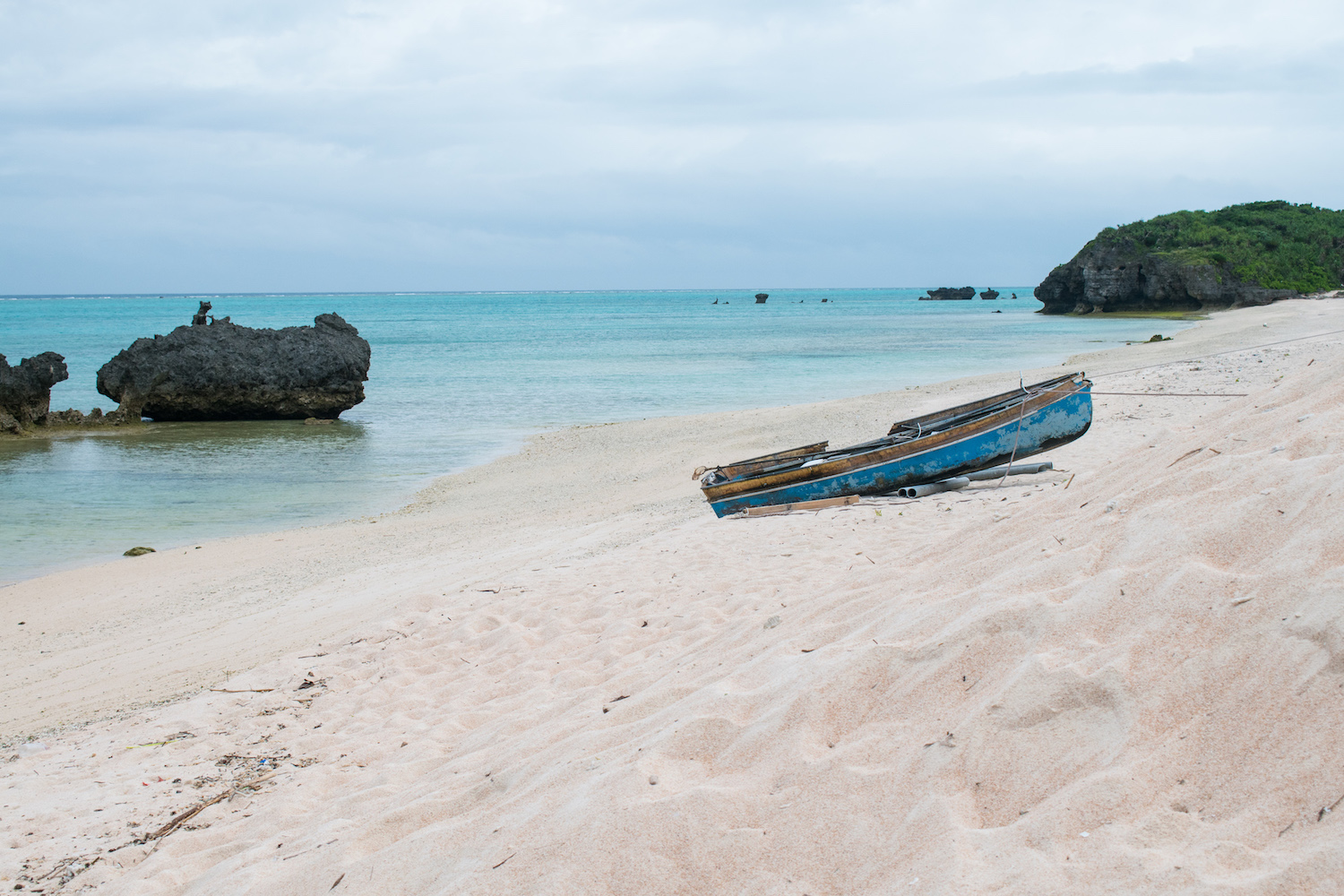
与論島は九州沖に位置する奄美群島のひとつで、奄美群島国定公園の一部に指定されている。人口6,000人、広さは20平方キロメートルと規模は小さいが、魅力に溢れた島だ。最高にフォトジェニックなビーチ、様々な生き物が生息する澄み渡った海、丘陵の連なる景観といった神秘的な光景が見られるこの島は、美しさという点では太平洋諸島のいずれにも負けない。しかし実際に体験してみないことには、その島の真の魅力は伝わらないだろう。今すぐにも訪れて欲しいところだ。
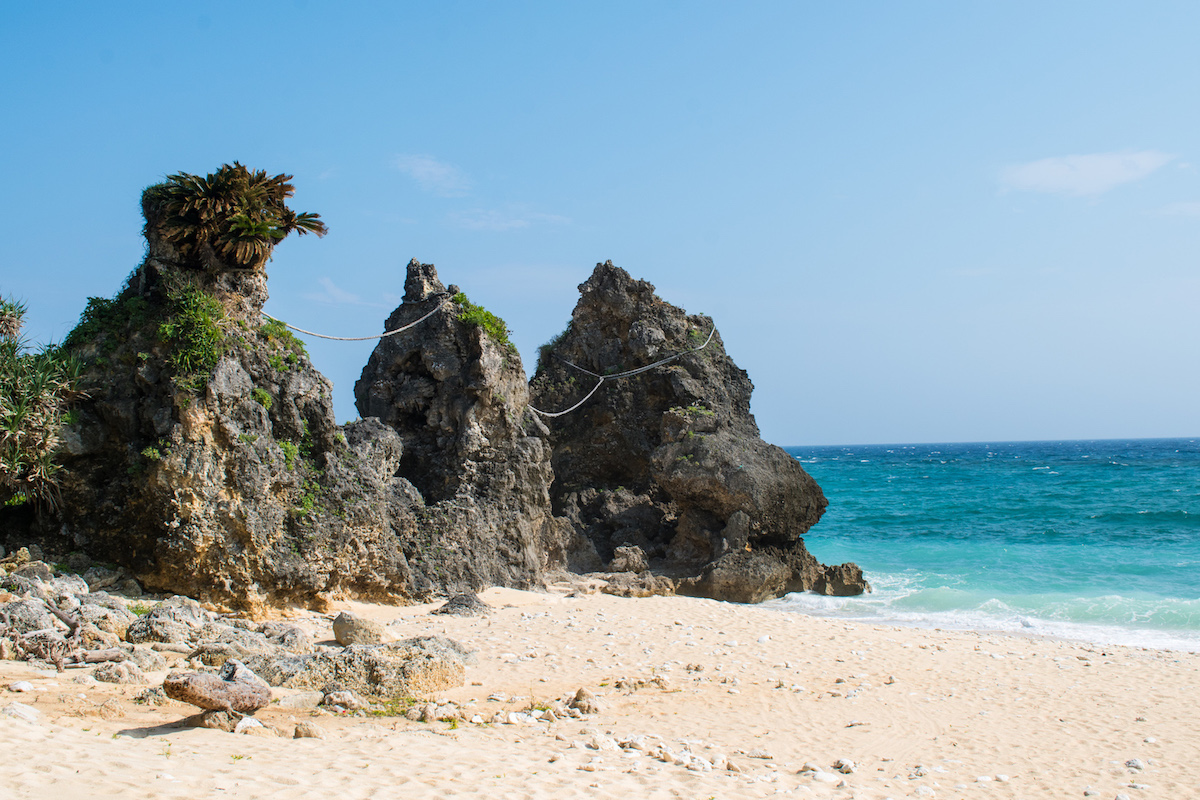
与論島の歴史
絵画のように美しい島、与論島の歴史にはどこか謎めいたところがある。いつから人が居ついたのか、正確な日にちは不明だが、8世紀からとされており、琉球王国の領土として按司という階級の実力者が統治していた。
1200年代の半ば、与論島は当時沖縄を支配していた3つの王国の一つ、琉球・北山王国の勢力下に入った。1600年代初頭には、薩摩藩(九州地方の鹿児島県と宮崎県を合わせた領地)の武士が与論島を侵略したことから、鹿児島県に属する島となった。第二次世界大戦後、小さな与論島は、隣のずっと大きな島、沖縄と共にアメリカの占領下に置かれたが、1953年になって日本に返還された。
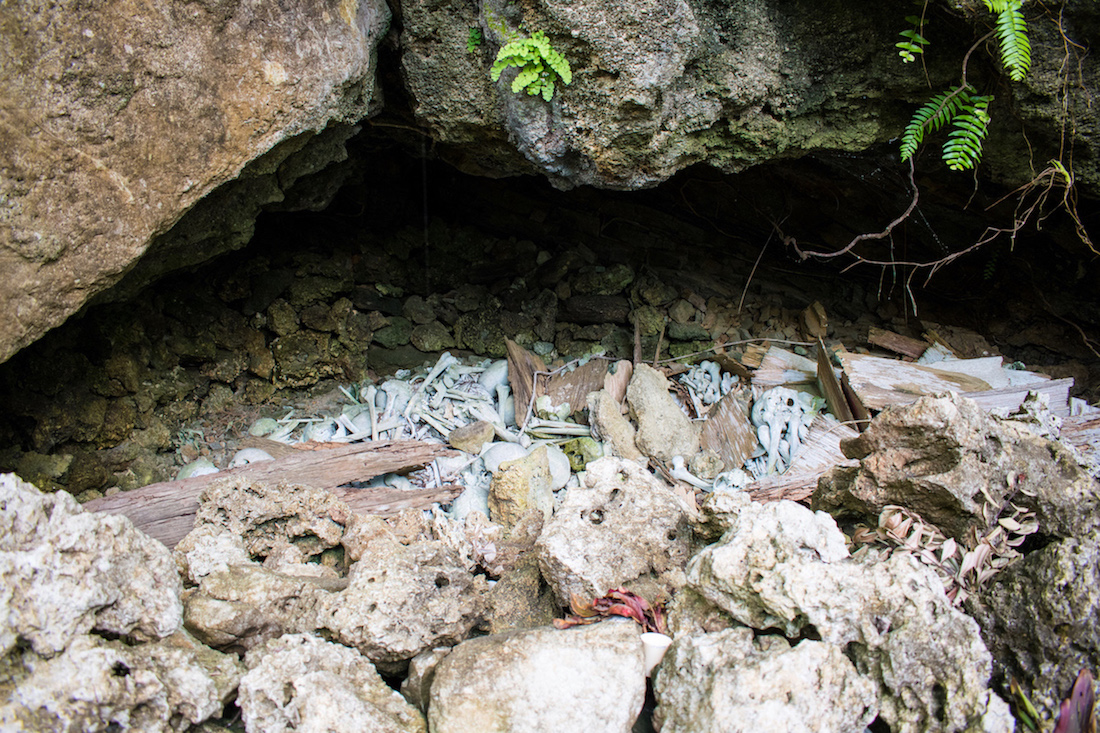
与論島の文化
与論島は数々の勢力に統治されてきたが、島の文化遺産はどの時代においても独自性を保っていた。外来の文化に着想を得ているが、支配されてはいない。与論島の文化は、沖縄の生活様式を反映したもので、それは琉球風の建築デザインや、オリオンビールへの愛着に見て取れる。
また、島には沖縄流の行事が受け継がれており、十五夜(満月祭)と呼ばれる行事では、年に3回、地元住民が集まって豊作を祈る。十五夜は3月、8月、12月に行われ、琉球の踊りを真似た伝統舞踊が披露される。
与論島には、ユンヌフトゥバ(与論の言葉)という独自の方言がある。しかし他の地域の方言と同様、悲しいことにユンヌフトゥバは消滅しつつある。だが一部では、消滅防止に向けた運動が展開されており、与論島で世論民俗村の村長を務める菊秀史氏らは、地元の学校に与論方言を扱うよう働きかけている。宗教的な面については、与論島では、日本の他の地域ほど仏教が根づいておらず、婚礼や葬儀など宗教的な催事は、古くから伝わる神道のしきたりに従い執り行われる。
1984~1985年、与論島はギリシャの有名な島、ミコノス島と友好を深め、姉妹都市となった。2つの島の友好関係は、与論島文化のあらゆる面に浸透している。島の主要道路の脇には、ギリシャの美しい絶景を描いた大きな白い壁画がある。また与論町は、町の大通りの名前を、同じく美しい姉妹都市にちなんでミコノス通りと名付けてもいる。
移動手段の選び方
広さ約20平方キロメートルの与論島は、短い時間でも楽に見て回ることができるが、移動手段を賢く選ぶには、傾斜がとんでもなく多い丘陵地帯だということをお忘れなく!
レンタカーは、手軽に使える移動手段だ。たまに農家のトラックがすれ違う以外、交通量はあまりなく、駐車場も十分に整備されている。参考までに、予約から乗車までをできるだけスムーズに進めるには、手ごろな価格で便利に使えるヨロンレンタカーがおすすめだ。島を離れる時には、車両を空港の駐車場に返却するだけで済む。
しかし天気がいい日には、電動自転車ほど与論島の絶景を満喫できる移動手段はない。傾斜も楽に登れ、海風に髪をなびかせながら、砂浜の海岸線までを巡ることができる。電動自転車のレンタル料は24時間2,000円。夜間も返却不要で、路上に駐輪できる。
ウェブサイトはこちら
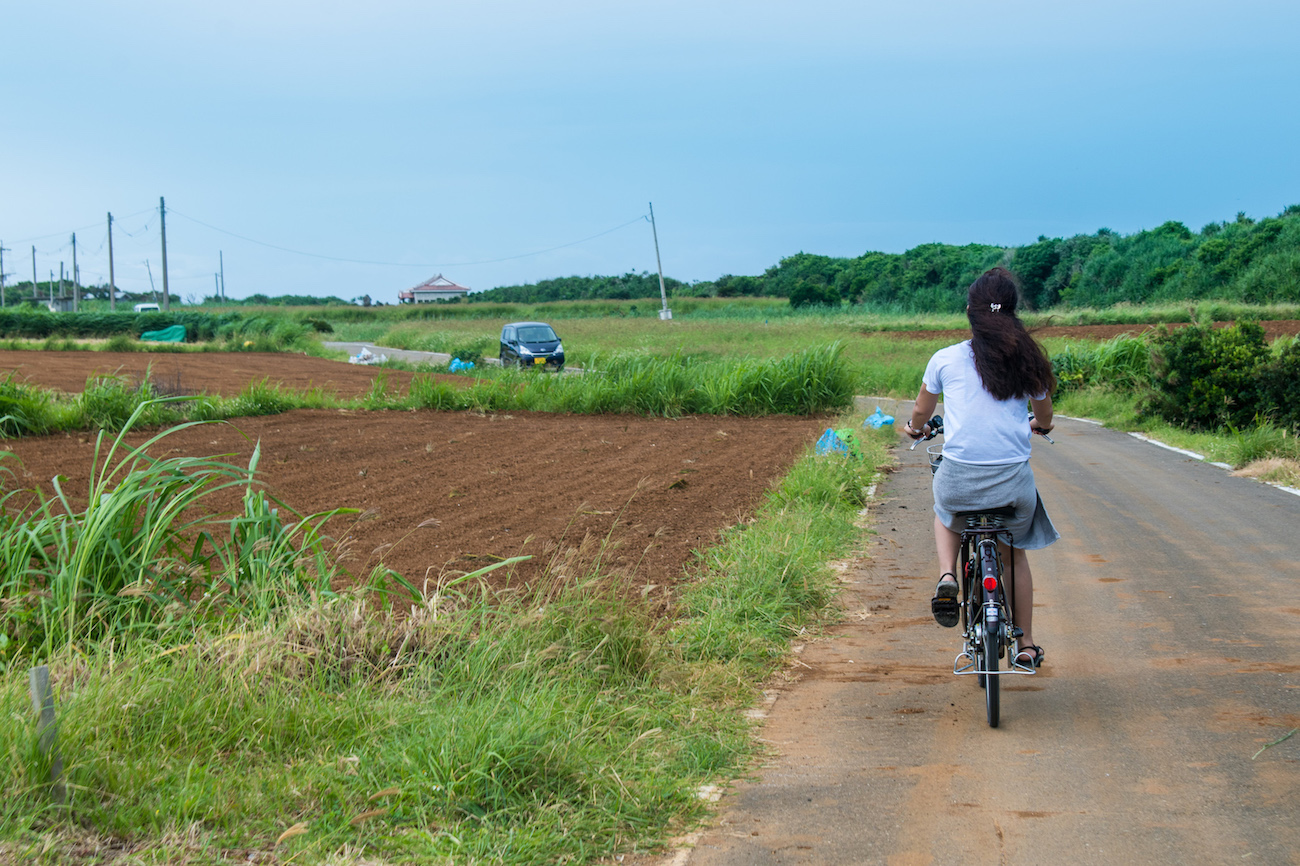
与論島のビーチ
与論島には隠れたビーチスポットが数えきれないほどあり、そのようなビーチの多くは島の規模にしてはとても小さいが、ビーチをほとんど独り占めできるチャンスがある。このようなビーチは合わせて60ヶ所と言われている。多少の苦労を厭わず、崖の岩場の一つや二つは平気で下れるという人にとっては、島全体がプライベートビーチのようなものだ。
大兼久(おおがねく)は、最も有名なビーチだ。なぜかというと、4月~10月にかけて干潮時にのみ姿を現し、滅多に見られないという幻の砂州、百合ヶ浜から最も近いビーチだからだ。幻想的なターコイズブルーの海の中央に、小さな砂の島が浮かんでいるかのような百合ヶ浜は、自然が見せてくれる小さな魔法と言える。しかし他にも必見の、魔法のようなイベントがたくさんある。このビーチでは、シュノーケリングやウミガメの観察、パドルボード、ジェットスキーなど、与論島でぜひとも楽しみたいアクティビティも体験できる。
与論島のレストラン、カフェ
正直なところ、与論島の食文化は、観光の目玉ではない。地元の料理といえば、紫芋や塩気のある海ブドウといった沖縄料理がほとんどだと想像するかもしれないが、そうではない。与論島には、不釣り合いだがカレーやイタリアンなど外国の料理を提供するレストランがたくさんあり、郷土料理はそれよりわずかに多い程度だ。
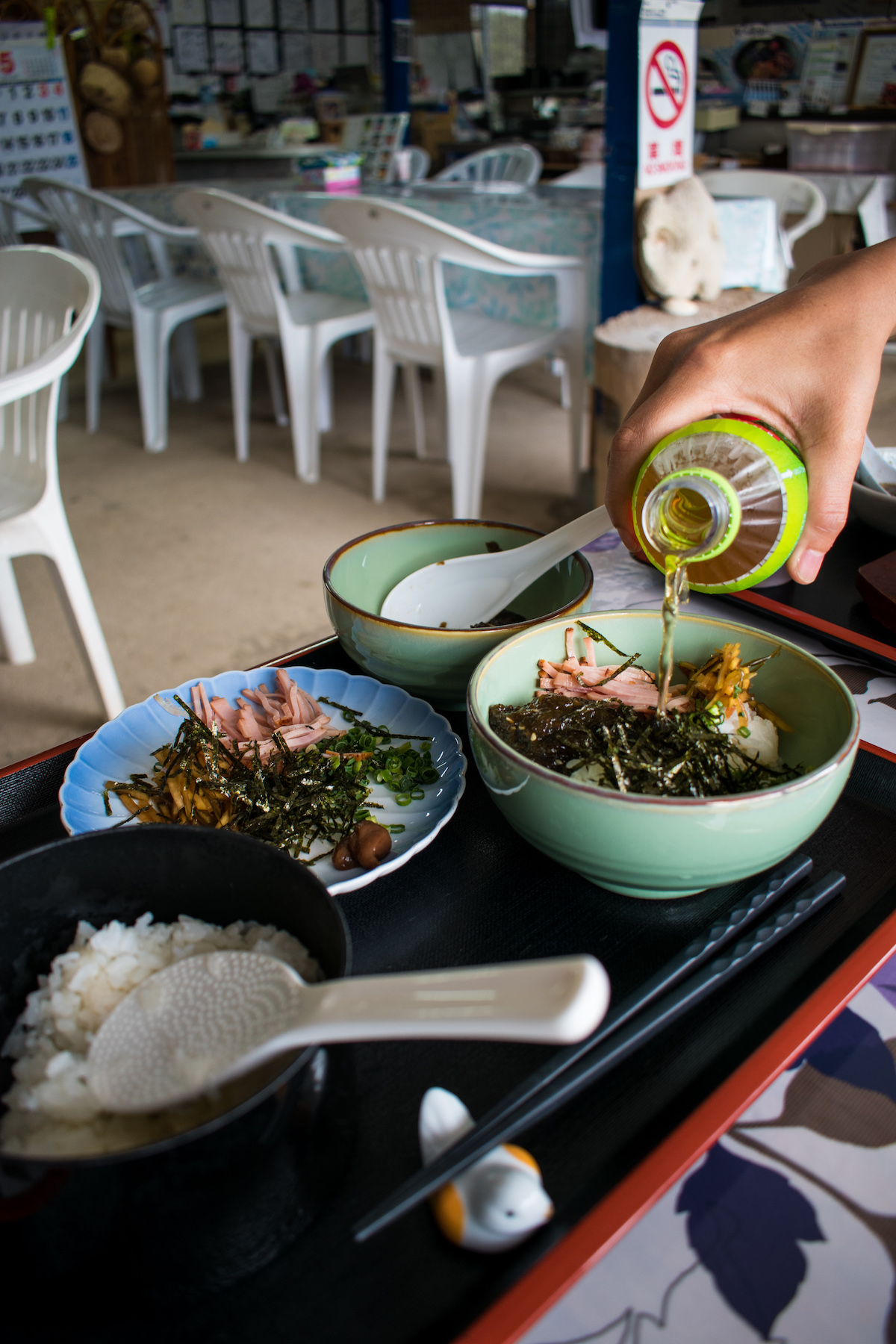
しかし料理といえば、味咲(みさき)はぜひ押さえておきたい。レストランというより倉庫のようなこぢんまりとしたこの店では、オリジナルのもずく料理を提供している他、かき氷が大人気となっている。
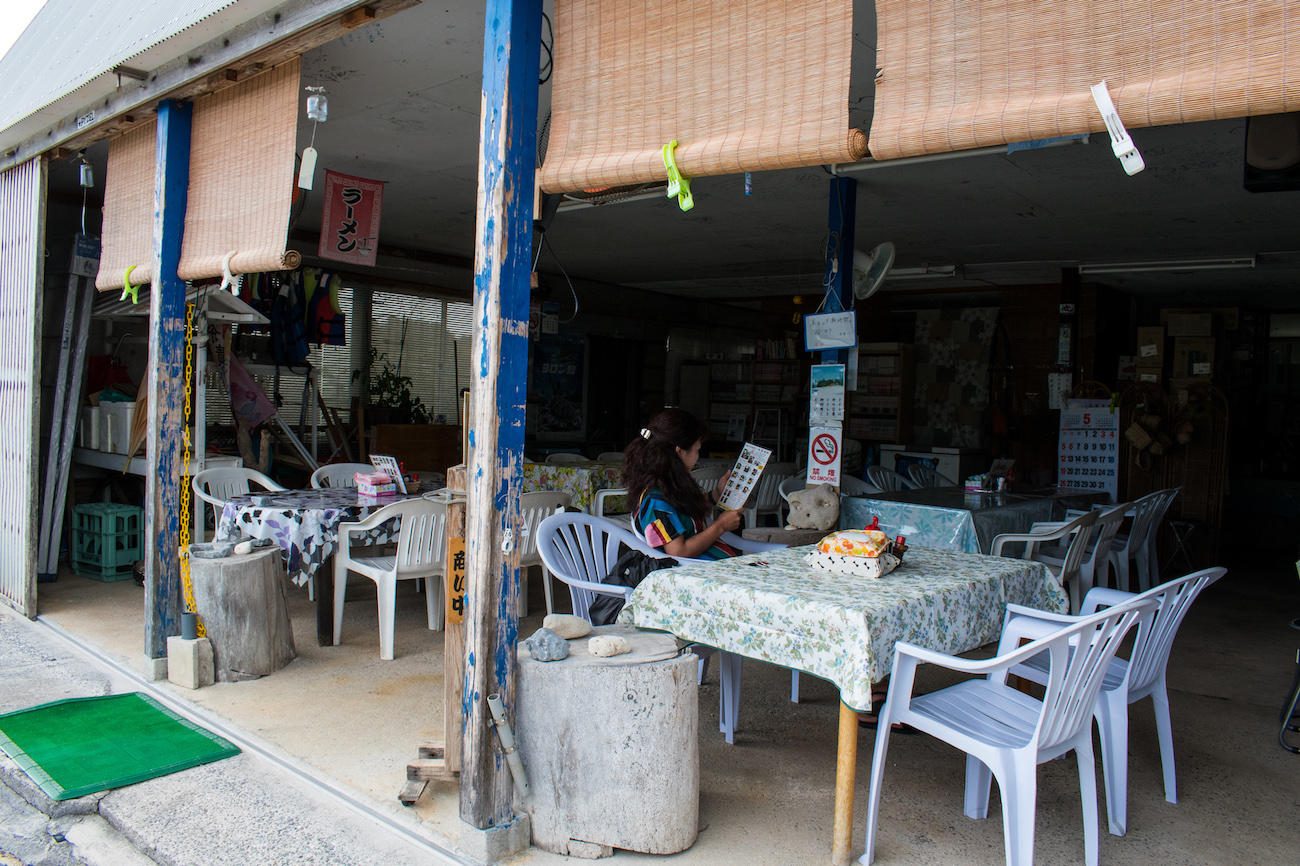
与論島を旅行するなら、カフェココにも立ち寄ってほしい。白と青を基調としたギリシャ風の鮮やかな外装が印象的だが、店内は落ち着いた雰囲気で、椅子の中にはビンテージものもある。カウンター席も用意されており、レトロでお洒落な内装となっている。カフェココでは数々の多国籍料理を提供しているが、イチ押しはフラッペだ。特にラズベリーとチョコレートがおすすめ。
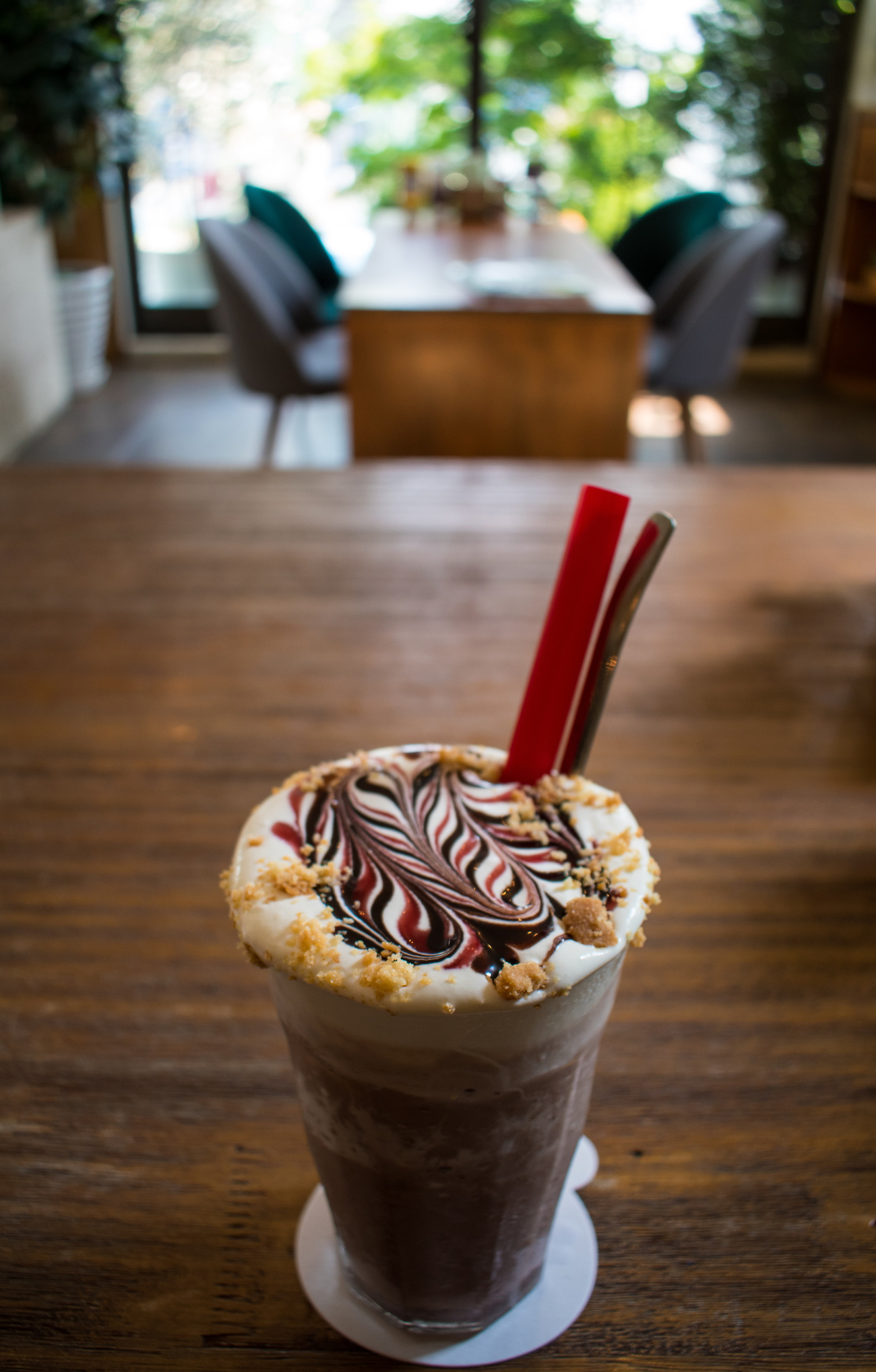
観光スポット
美しいビーチを遊びつくすのもいいが、この素晴らしい島の遺産についても学んでおかなければもったいないし、島にも失礼だ。この島に関する歴史を学ぶなら、地元の歴史家、菊秀史氏が経営する与論民俗村が最適だ。島の歴史を記録した資料を保全しようという取り組みの一環として創設された与論民俗村では、藁ぶき屋根の伝統家屋や、昔の暮らしの中で使われていた機械、道具類を展示している他、工芸品のコレクションも多岐にわたり、与論島の歩みを学ぶことができる。
与論島には鉄道駅があるが、そこに電車はない。アクアブルーの海へと繋がる岩の崖を背景にした、一風変わった小さな観光スポットだ。この「駅」には架空の線路があり、それは沖縄、鹿児島へと繋がっている。
与論城跡地にも見どころはある。しかし素晴らしい城にもかかわらず、実際には看板が一つと床材がいくつか残っているだけなので、期待しすぎは禁物だ。与論城建設中に島で戦争が勃発したため、城は未完成のままになってしまったとされている。木々の青々と茂った丘の頂上にあるため、美しい景色を一望でき、夕日を眺めるには絶好のロケーションだ。
与論島観光に最適な時期
観光するなら4~9月が最適だが、5~7月の与論島は梅雨の時期に入るので、突然の雨によりビーチを満喫できなくなってしまう可能性がある。ビーチを独り占めするという夢のような経験をしたいなら、お盆は避け、5月のゴールデンウィーク明けがおすすめだ。
与論島への交通手段
与論島へ行くには、与論空港行きの国内線、琉球エアーコミューター(RAC)が那覇(沖縄県)から定期便を運航しており、こちらが最も一般的なルートだ。船を希望する場合、マルエーフェリーとマリックスラインから鹿児島・沖縄便が出ており、隔日での運行となっている。与論島までは鹿児島から約20時間、沖縄からは約5時間の旅となる。
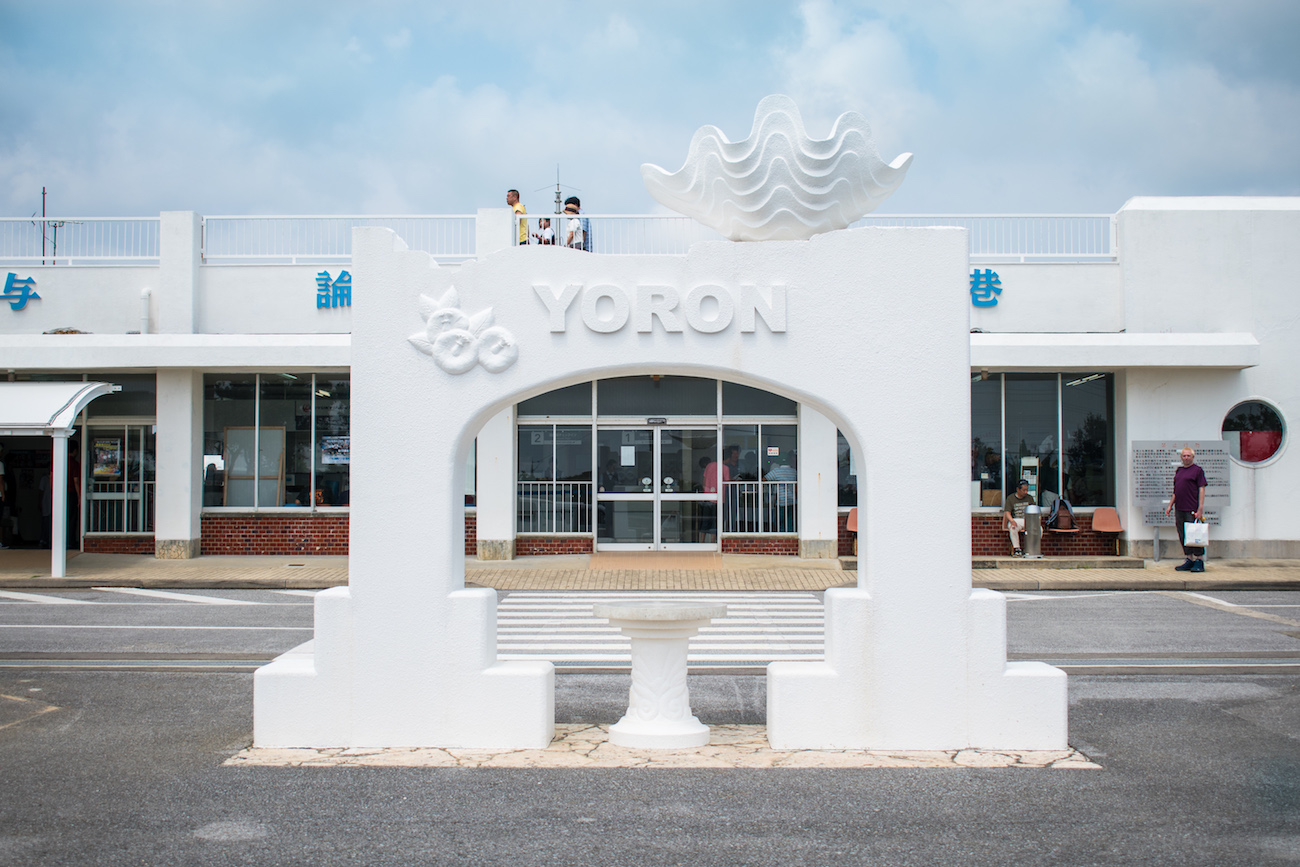
—
All photos by Lucy Dayman
—
Lucy Dayman | ルーシー・デイマン
オーストラリア生まれ。2016年、オーストラリア・メルボルンでのカルチャー・音楽雑誌の編集の仕事を辞め、日本で旅をしながら仕事を始める。フリーランスライターとしての仕事と旅の傍ら、フィルム写真を撮影している。
Instagram: @lucy.dayman.
HP: lucydayman.com
Yoron: A Taste of Tropical Japan
The Japanese archipelago is a 6,852 large cluster of islands that sprawl some 3,000-plus kilometers all the way from the Sea of Okhotsk northeast to the Philippine Sea in the south and touching the northeast coast of the combined continent of Eurasia. Consisting of islands of vastly different locations, landscapes, and cultures, the country’s islands are fertile ground for exploration.
Japan is a nation known for its mega metropolises Tokyo and Osaka, and its rich historical legacies held strong in cities like Kyoto, Takayama and Kanazawa, but to see a different side of this incredibly diverse nation, go beyond the tourist trail. A great place to begin really digging deep is Yoron, an island situated between mainland Okinawa and Kagoshima.
One of the Amami Islands off Kyushu, Yoron belongs to the Amami Gunto Quasi-National Park, and with a population of 6,000 and a mass of 20 square kilometers it’s humble in size, but not in impact. Picture perfect beaches, crystal clear water that’s home to diverse marine life and hilly mountain backdrops it’s a magical place, a place that in terms of beauty would easily rival any of the Pacific Islands. It’s a place that that has to be experienced in the flesh to be truly understood, and there’s no better time to visit than right now.
History
The history of this picturesque piece of land is somewhat enigmatic. There are no clear dates on which the island was settled, however, from the 8th century, the island was ruled by the Aji nobility, under the reign of the Ryukyu Kingdom.
In the mid-1200s, Yoron became Hokuzan Ryukyu Kingdom, one of the three kingdoms which controlled Okinawa. In the early 1600s was when the island became associated with Kagoshima Prefecture, as samurai from Satsuma Domain (a collective associated with Kagoshima Prefecture and Miyazaki Prefecture in Kyushu) invaded Yoron. Following World War II, the small island like its much larger neighbour Okinawa was occupied by the United States all the way up to 1953 after which it was handed back to Japan.
Local culture
The island has been through many various rules, but its cultural legacy has always remained fiercely independent. Inspired by external forces, but not dictated by them. Local Yoron culture has ties to the Okinawan way of life, you can see it in the island’s Ryukyuan style architecture and fierce love for Orion Beer.
The Islanders also party Okinawa style, three times a year the locals gather and pray for good harvest in what’s called the Jyu-go-ya (Full Moon Festival). Happening in March, August and December the traditional dances performed mirror those of Ryukyu style.
Yoron has its own native tongue known as Yunnu futuba (Yoron language), but like so many other regional languages it’s sadly dying out, but not without a fight. Some of the local residents like the owner of the local Folk Museum Hidenori Kiku are campaigning for it to be taught in the local schools. In terms of spirituality, the people of Yoron never embraced Buddhism as fully as the rest of wider Japan, all special religious occasions like weddings and funerals are practiced in the ancient Shinto tradition.
In 1984-5, Yoron and the famous Greek island of Mykonos teamed up to become affiliated sister cities, and it’s a mutual love you can really feel permeating all facets of the island’s culture. A large white mural depicting the stunning Greek landscape flank the island’s major road, while the town has also named a major street after its similarly stunning sibling city; Mykonos Street.
Options for getting around
Measuring around 20 square kilometers, Yoron is definitely easy to cover in a short period of time, but do be warned it’s quite hilly, to choose your mode of transport wisely!
A rental car is an easy option, the roads are generally rather quiet except for the occasional farming tractor two, and parking is plentiful. For easy, booking and to get on the road as soon as possible, consider Yoron Rental Car, as it’s affordable and convenient. When you’re ready to leave you can just return the car to the airport parking lot.
If the weather is right, however, the only way to truly immerse yourself in Yoron’s incredible beauty is by electric bicycle. Easy enough to power up the hills, let the sea breeze blow through your hair, and cruise all the way up to the sandy shoreline. Electric bike rental costs 2,000 yen per 24 hours, and you can keep it with you overnight, just park it on the street.
Web: https://yoron-nangoku.com/
Beaches
Yoron boasts countless hidden beaches, and many of them are quite small given the landscape of the island, however, chances are you’ll practically have most of them to yourself. There are a reported 60 beaches in total. So, if you’re willing to look a little harder, and you’re not too scared to descend a rocky ravine or two the entire island is your sandy oyster.
Ooganeku is the most well-known beach on the map. That’s because it’s the closest neighbor to Yurigahama an elusive sandbar that only appears between April and October when the tide is right. Like a small sand island plopped in the middle of the hypnotic turquoise sea, Yurigahama is nature’s little magic show, but there’s plenty more magic to discover. On this beach is where many of the island’s main activities like snorkeling, turtle watching, paddle boarding, and jet ski riding happens too.
Food and cafes
To be honest, food culture isn’t really the island’s major focus. It’d be fair to assume that the locals would draw heavily from Okinawan cuisine, purple yams and salty umibudo galore, but you’d be mistaken. The area has a mismatch of different eateries offering foreign cuisines like curry and Italian and slightly more local specialties.
Misaki, however, is definitely a culinary highlight. More a shed than a restaurant, this quaint and endearingly low key restaurant serves unique mozuku seaweed dishes and incredibly popular shaved ice dishes.
Cafe Coco is another must add stop to your Yoron itinerary. Striking in its Grecian style white and blue glory from the exterior, inside the cafe is a little more low key, fashionable retro with chairs and vintage chairs and communal seating along the bar. The restaurant serves a multicultural array of dishes, but you can’t go past the frappe selection, raspberry and chocolate is our tip.
Places to visit
It’s easy to get caught up in the beachy beauty, but you’d be doing yourself and Yoron a disservice not to learn a little more about the legacy of this fascinating place. The best place to visit to garner a little local knowledge is the Folk Museum, run by local historian Hidenori Kiku. Founded in an effort to maintain a physical record of the area’s historical evolution, the museum features traditional thatched roof houses, machinery, and tools from lifetimes ago, as well as a collection of other miscellaneous artifacts each of which tells a story of how the island came to be.
Yoron has a train station, but no train to speak of. A novel little attraction backdropped by rocky cliffs that fall down into the aqua blue ocean, the ‘station’ has an imaginary line that says it connects to Okinawa and Kagoshima.
There’s also the Yoron castle remains which are worth visiting, not so much because the castle is impressive, in fact, it all that exists is a plaque and some flooring. It turns out that while the castle was in construction, the island went into battle and the final product never came to be. That said, high atop the lush green hillside it’s a stunning place to take in the view and it’s an excellent location for admiring the sunset.
Best time to visit
Between April to September is the best time to visit, but it’s worth nothing around May-July is when the island faces a rather unpredictable rainy season which can really put a damper on any beach holiday. If you want to experience the illusion that you do have the beaches to yourself, try visiting in May just after Golden Week and avoid the Obon national holiday week.
How to get there
To get to Yoron, is a domestic flight to Yoron Airport, Ryukyu Air Commuter (RAC) regularly runs flights from Naha (Okinawa) which is the most regular route. If you’re looking to go by boat, A-Line Ferries and Marix Line Ferries both serve the Kagoshima to Okinawa route and they run on alternate days. If you’re traveling from Kagoshima, the trip to Yoron will take about 20 hours, while traveling from Okinawa it takes about five hours.
—
All photos by Lucy Dayman
—
Lucy Dayman
Originally from Australia, in 2016 Lucy left her job as an editor of a culture and music magazine in Melbourne to live, work and travel in Japan. Between freelance writing and traveling, she’s been dabbling in film some very amateur film photography, which you can check out on her Instagram: @lucy.dayman. Check out her other writing work and photos at lucydayman.com
